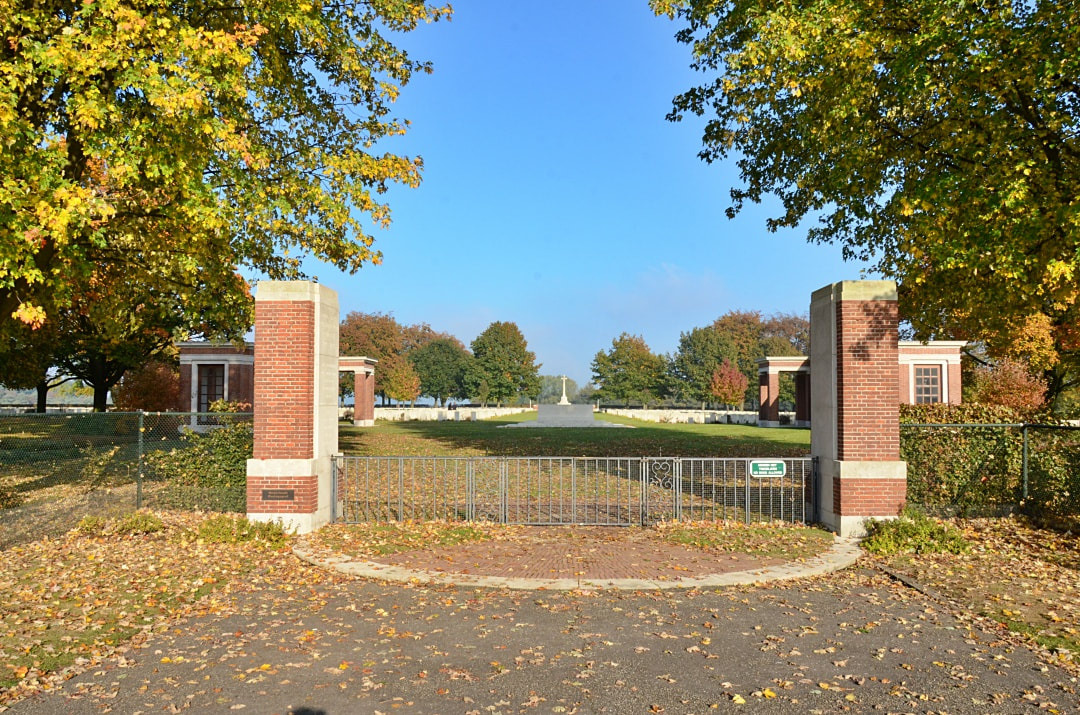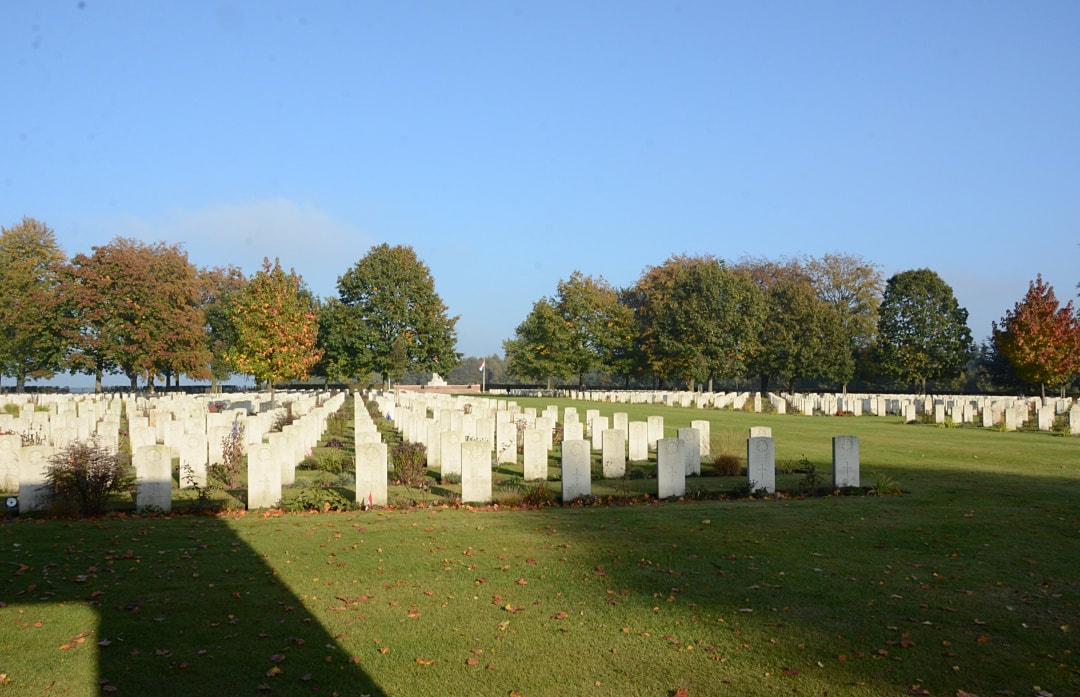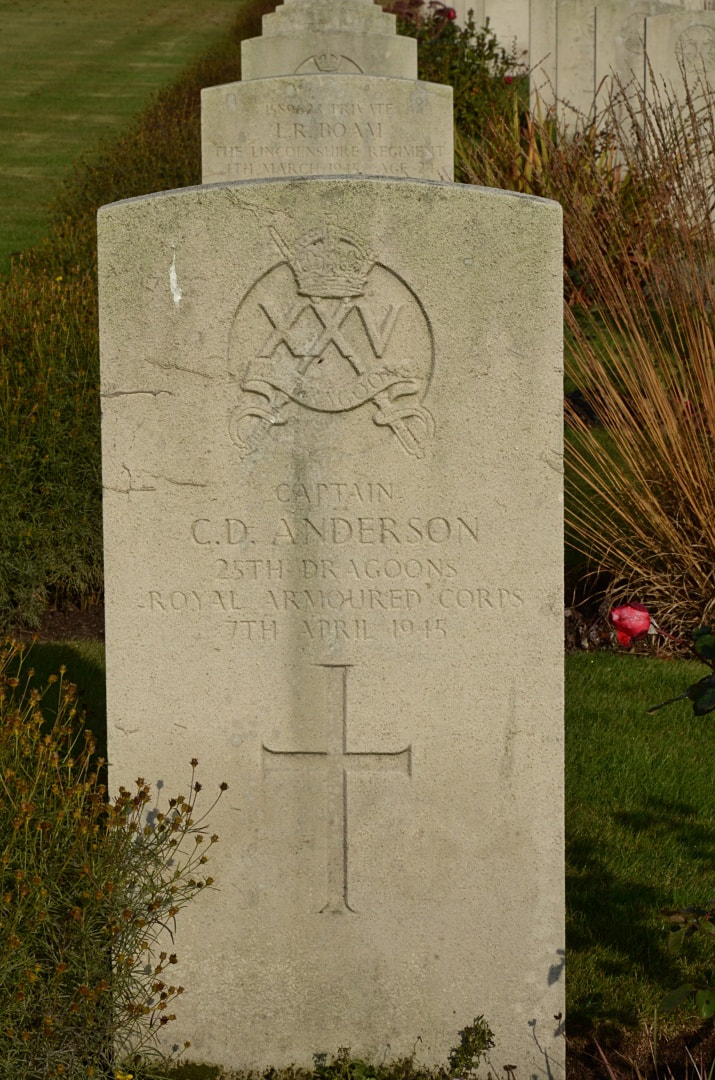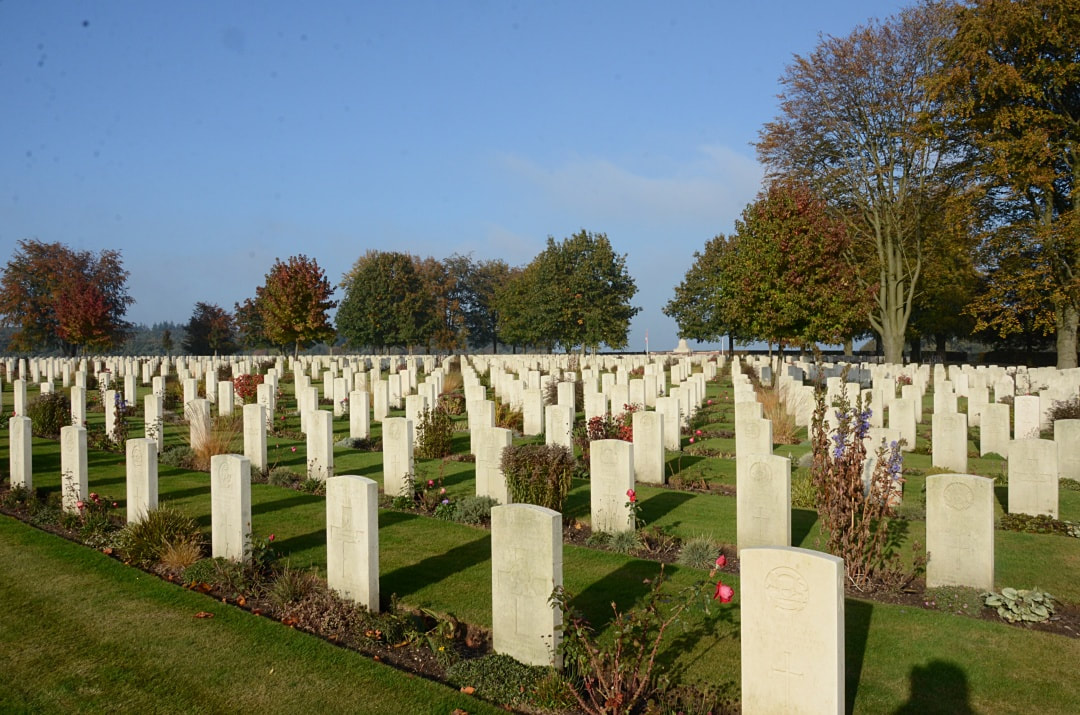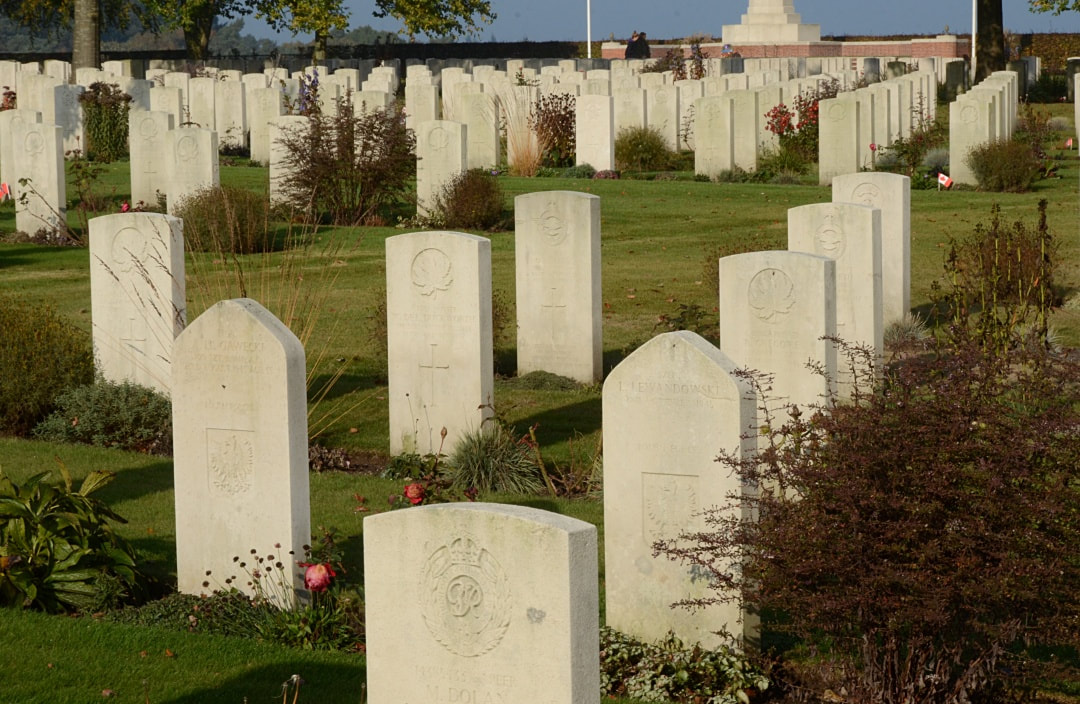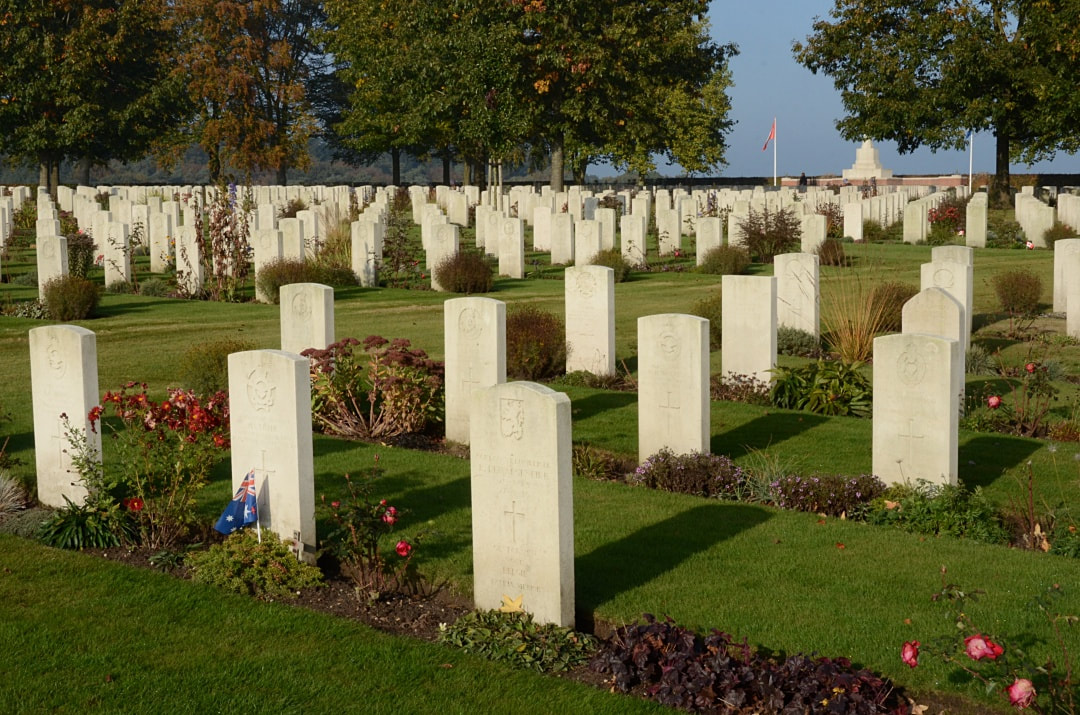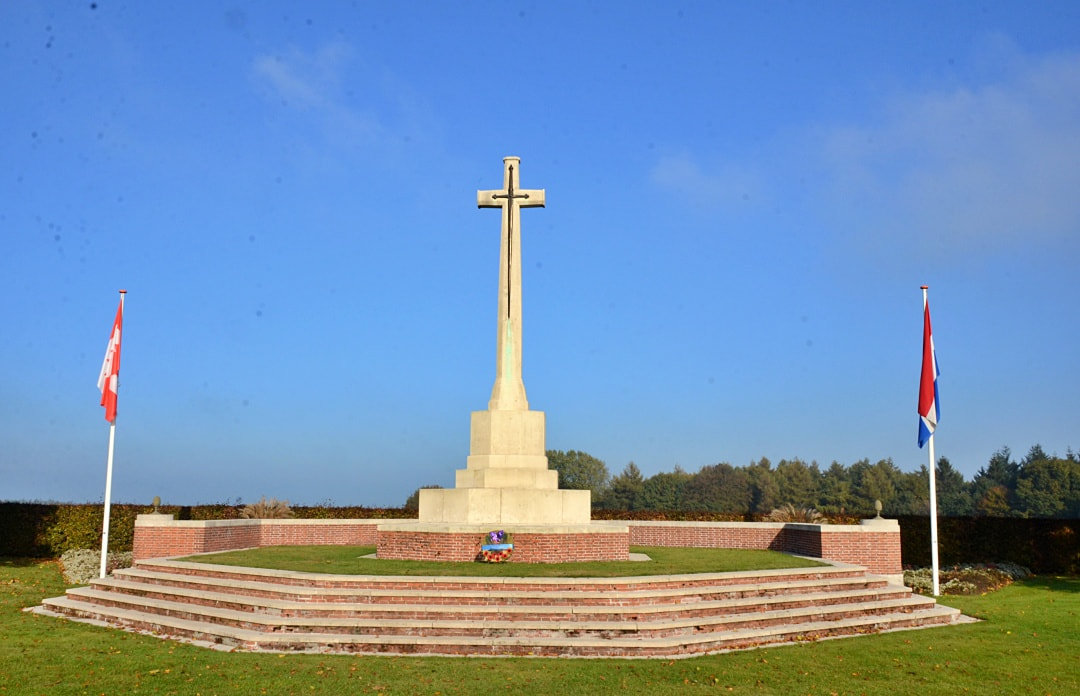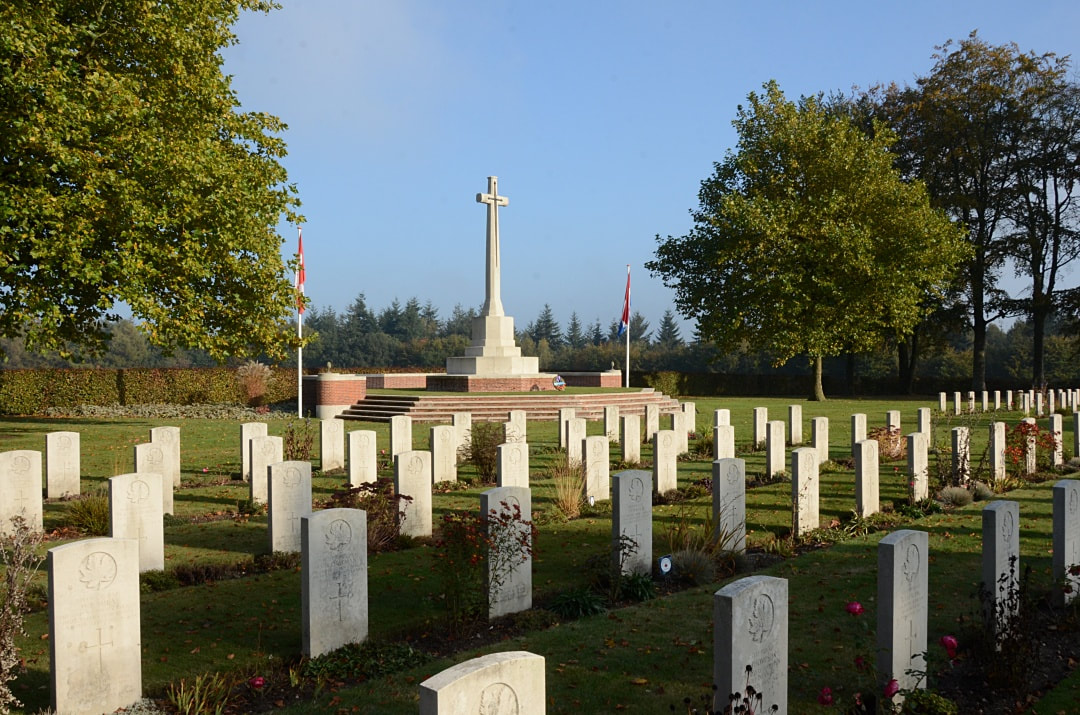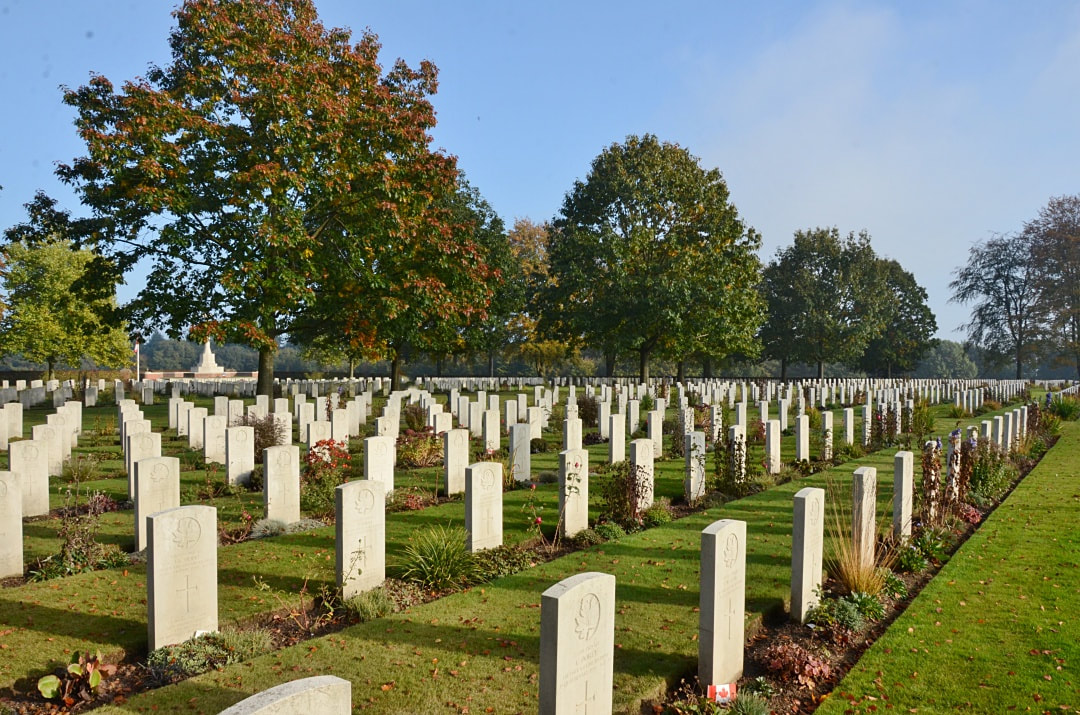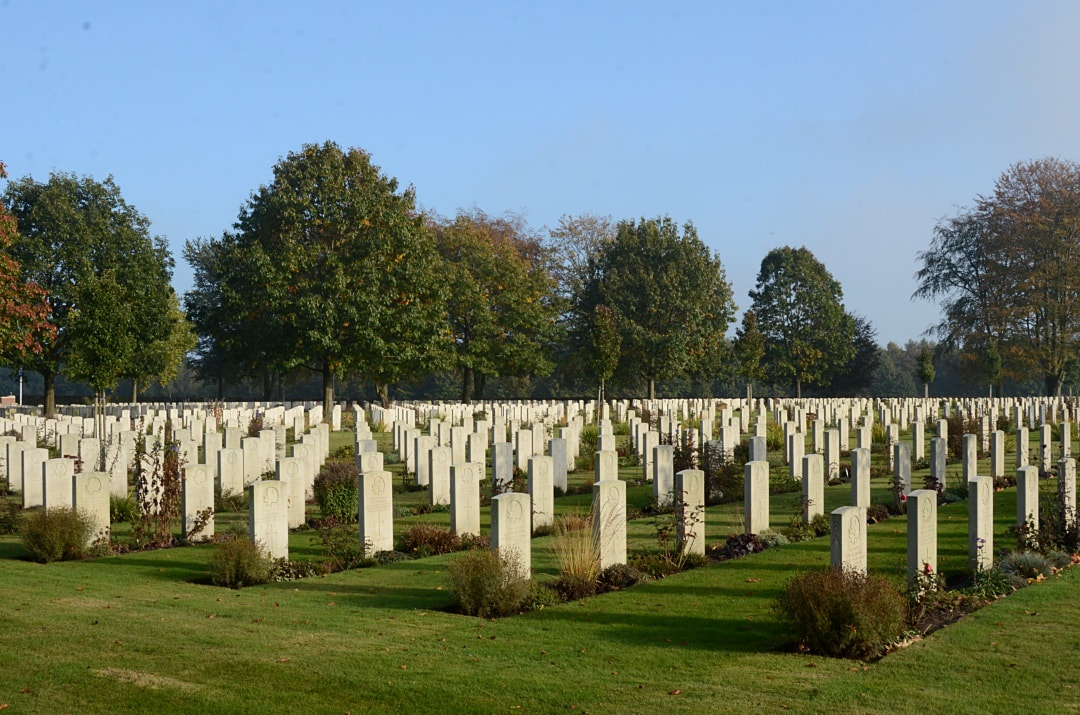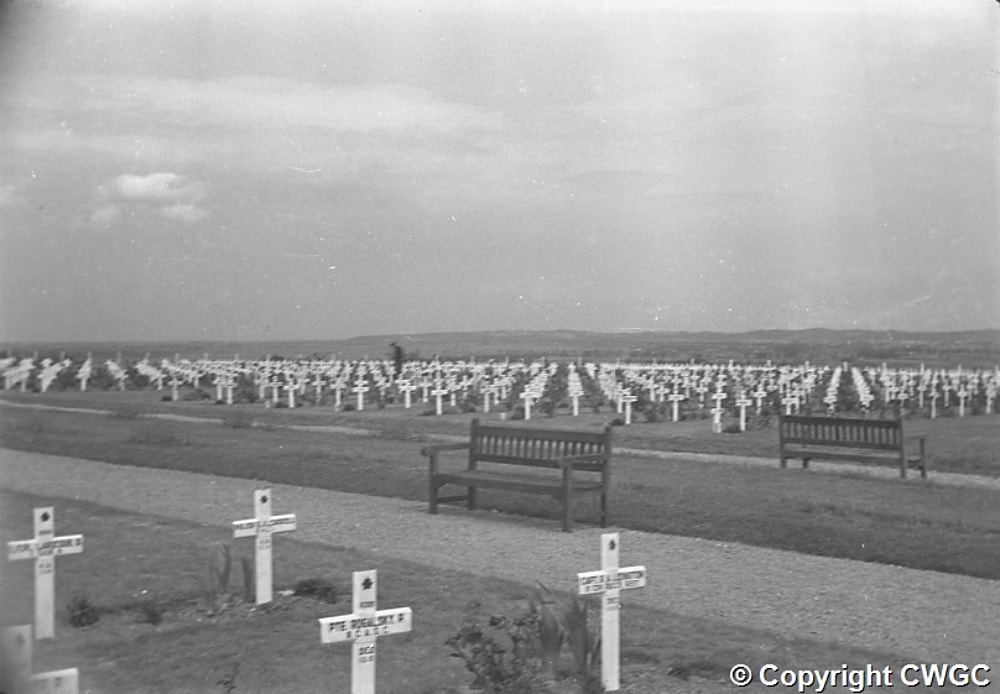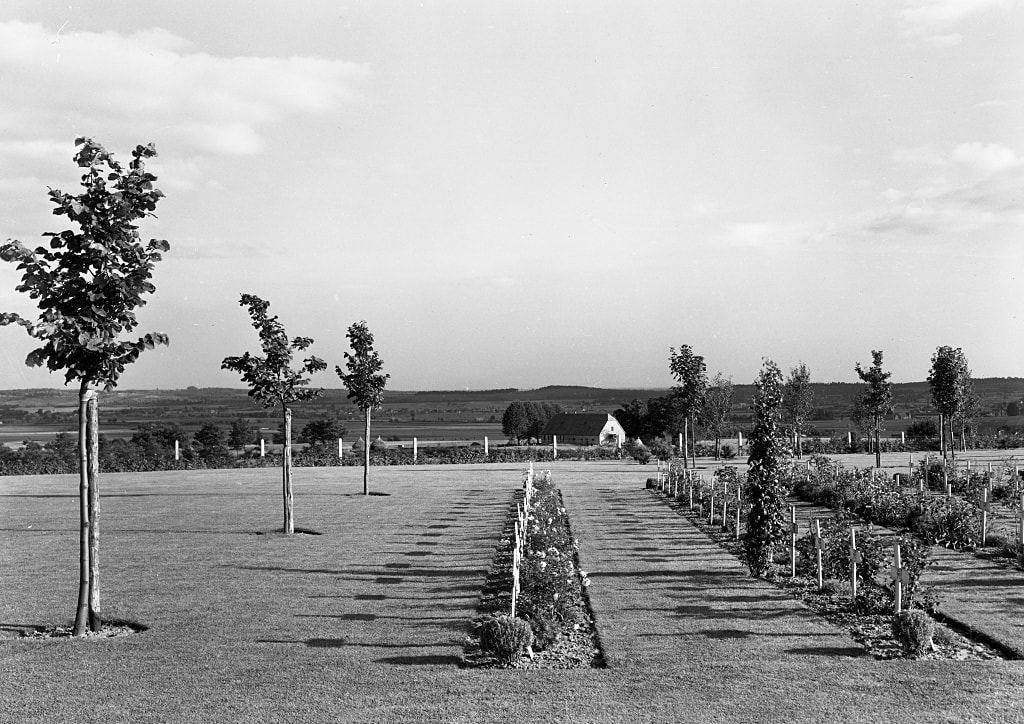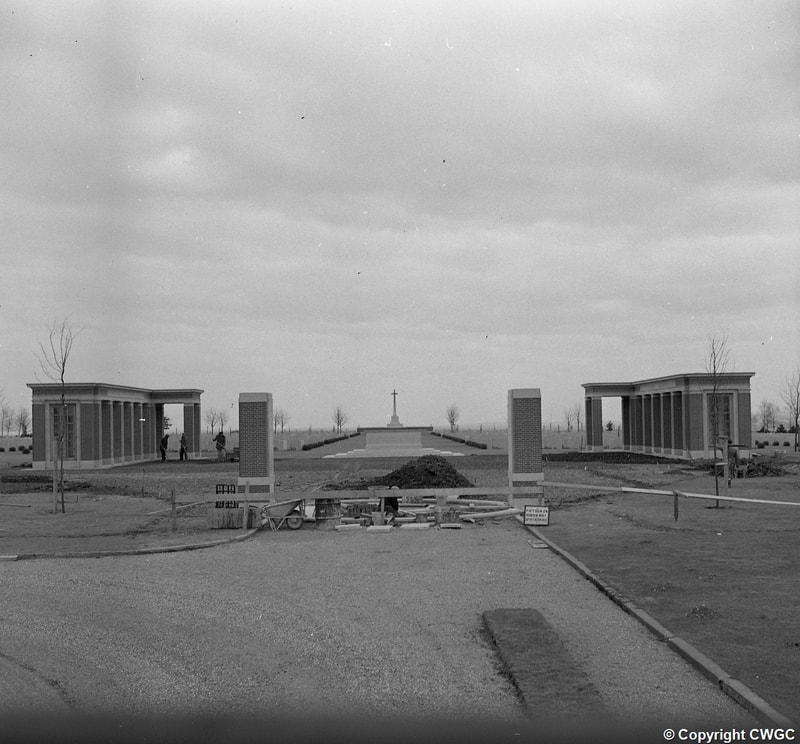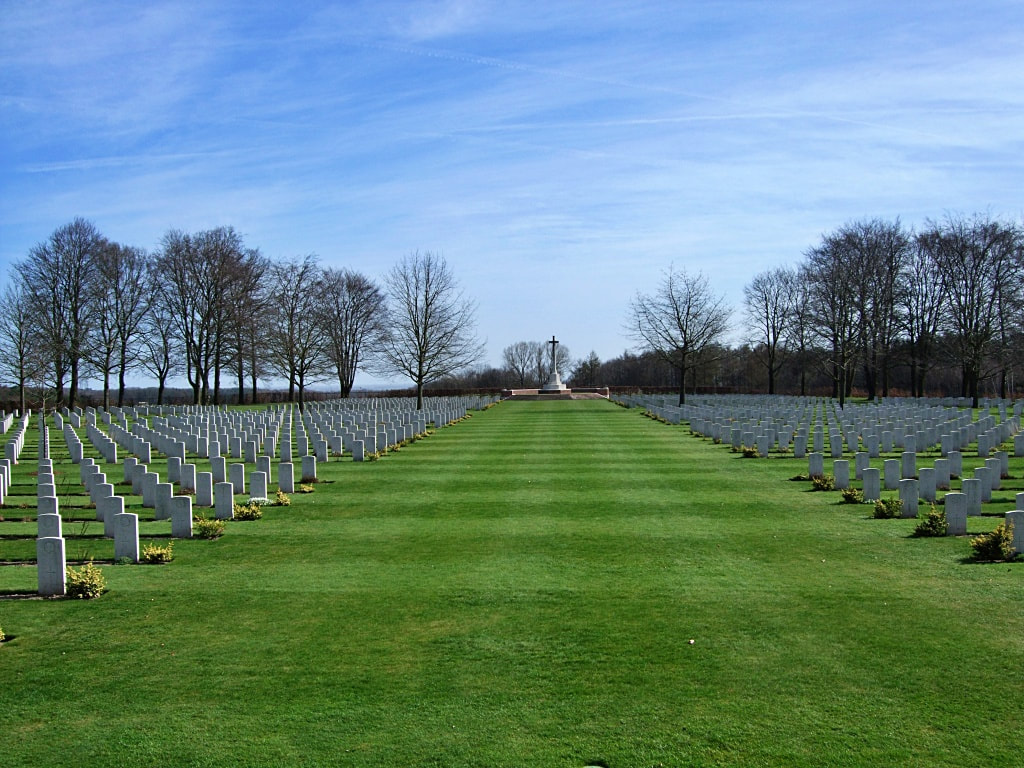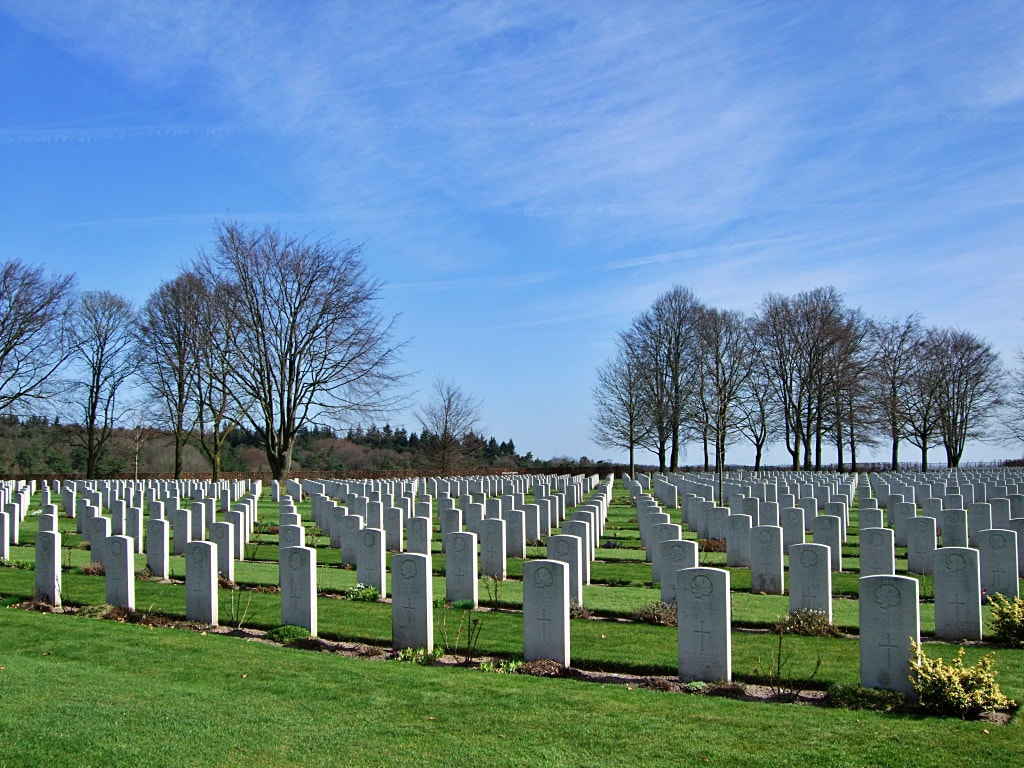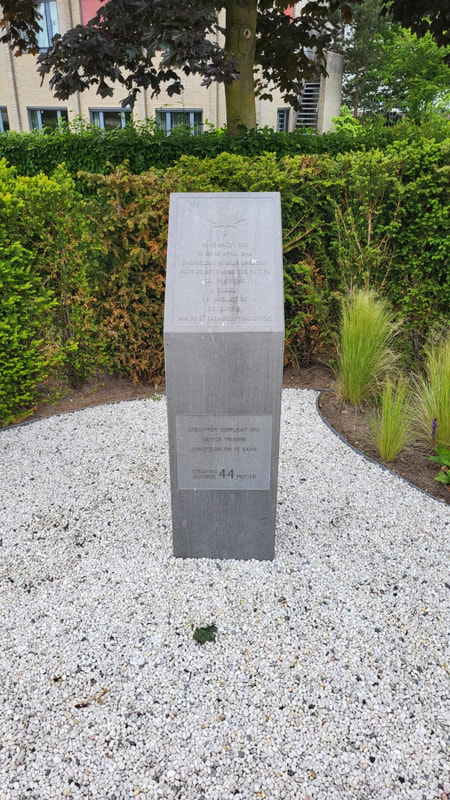GROESBEEK CANADIAN WAR CEMETERY
Gelderland
The Netherlands
GPS Coordinates: Latitude: 51.79766, Longitude: 5.93089
Location Information
The village of Groesbeek is in the east of the Netherlands and approx 10kms south east of the city of Nijmegen.
From the A73 motorway NIJMEGEN to VENLO take exit 3 (Afrit 3) MALDEN / GROESBEEK / MOOK / HEUMEN / OVERASSELT.
Follow signs for N271 MOOK.
Continue through the village of MOLENHOEK and in the village of MOOK turn left at the roundabout (CWGC sign for MOOK WAR CEMETERY) onto the GROESBEEKSEWEG.
Continue for approx 4.5kms and then turn left at the roundabout onto the PANNENSTRAAT.
Continue through the town where the road name changes to DORPSTRAAT.
Turn left onto BURGEMEESTER OTTENHOFFSTRAAT (CWGC Sign). After approx 100m turn right (CWGC sign) onto ZEVENHEUVELENWEG.
The cemetery is approx 2kms along this road on the right.
The cemetery address is:-
Zevenheuvelenweg 38
6561 Groesbeek
Netherlands
Visiting Information
Visitors are advised not to leave possessions lying visible in their car as theft is common at the municipal car park in front of the cemetery.
Historical Information
Allied forces entered the Netherlands on 12 September 1944. Airborne operations later that month established a bridgehead at Nijmegen and in the following months, coastal areas and ports were cleared and secured, but it was not until the German initiated offensive in the Ardennes had been repulsed that the drive into Germany could begin.
Most of those buried in GROESBEEK CANADIAN WAR CEMETERY were Canadians, many of whom died in the Battle of the Rhineland, when the 2nd and 3rd Canadian Infantry Divisions and the 4th Canadian Armoured Division took part in the drive southwards from Nijmegen to clear the territory between the Maas and the Rhine in February and March 1945. Others buried here died earlier or later in the southern part of the Netherlands and in the Rhineland.
The cemetery contains 2,610 Commonwealth burials of the Second World War, and nine war graves of other nationalities.
Total Burials: 2,619.
World War Identified Casualties: Canada 2,331, United Kingdom 255, Australia 3, Belgium 3, Poland 2, Netherlands 1, New Zealand 1. Russia 1. Total 2,597.
Within the cemetery stands the GROESBEEK MEMORIAL, which commemorates by name more than 1,000 members of the Commonwealth land forces who died during the campaign in north-west Europe between the time of crossing the Seine at the end of August 1944 and the end of the war in Europe, and whose graves are not known.
Commemorated on Memorial: United Kingdom 915, Canada 96, South Africa 2. Total 1,013.
The CEMETERY and MEMORIAL were designed by P.D. Hepworth.
The village of Groesbeek is in the east of the Netherlands and approx 10kms south east of the city of Nijmegen.
From the A73 motorway NIJMEGEN to VENLO take exit 3 (Afrit 3) MALDEN / GROESBEEK / MOOK / HEUMEN / OVERASSELT.
Follow signs for N271 MOOK.
Continue through the village of MOLENHOEK and in the village of MOOK turn left at the roundabout (CWGC sign for MOOK WAR CEMETERY) onto the GROESBEEKSEWEG.
Continue for approx 4.5kms and then turn left at the roundabout onto the PANNENSTRAAT.
Continue through the town where the road name changes to DORPSTRAAT.
Turn left onto BURGEMEESTER OTTENHOFFSTRAAT (CWGC Sign). After approx 100m turn right (CWGC sign) onto ZEVENHEUVELENWEG.
The cemetery is approx 2kms along this road on the right.
The cemetery address is:-
Zevenheuvelenweg 38
6561 Groesbeek
Netherlands
Visiting Information
Visitors are advised not to leave possessions lying visible in their car as theft is common at the municipal car park in front of the cemetery.
Historical Information
Allied forces entered the Netherlands on 12 September 1944. Airborne operations later that month established a bridgehead at Nijmegen and in the following months, coastal areas and ports were cleared and secured, but it was not until the German initiated offensive in the Ardennes had been repulsed that the drive into Germany could begin.
Most of those buried in GROESBEEK CANADIAN WAR CEMETERY were Canadians, many of whom died in the Battle of the Rhineland, when the 2nd and 3rd Canadian Infantry Divisions and the 4th Canadian Armoured Division took part in the drive southwards from Nijmegen to clear the territory between the Maas and the Rhine in February and March 1945. Others buried here died earlier or later in the southern part of the Netherlands and in the Rhineland.
The cemetery contains 2,610 Commonwealth burials of the Second World War, and nine war graves of other nationalities.
Total Burials: 2,619.
World War Identified Casualties: Canada 2,331, United Kingdom 255, Australia 3, Belgium 3, Poland 2, Netherlands 1, New Zealand 1. Russia 1. Total 2,597.
Within the cemetery stands the GROESBEEK MEMORIAL, which commemorates by name more than 1,000 members of the Commonwealth land forces who died during the campaign in north-west Europe between the time of crossing the Seine at the end of August 1944 and the end of the war in Europe, and whose graves are not known.
Commemorated on Memorial: United Kingdom 915, Canada 96, South Africa 2. Total 1,013.
The CEMETERY and MEMORIAL were designed by P.D. Hepworth.
Cemetery images below © Johan Pauwels
B/46495 Sergeant Aubrey Cosens, V. C.
R. C. I. C. 1st Bn. Queen's Own Rifles of Canada,
26th February 1945, aged 24.
Plot VIII. H. 2.
Son of Charles E. and Yvonne Cosens, of Latchford, Ontario.
Citation: The citation in the London Gazette of 18th May, 1945, gives the following details: In Holland, on the night 25/26th February, 1945 the 1st Battalion The Queen's Own Rifles of Canada attacked the hamlet of Mooshof. Sergeant Cosens' platoon, with tanks in support, had as their objective enemy strong-points in three farm-buildings. They were twice beaten back and were then fiercely counterattacked. Their casualties were heavy, including the platoon commander killed. Sergeant Cosens assumed command of the few survivors of the platoon, and placed them so as to give him covering fire while he crossed open ground to the one remaining tank and directed its fire. After a further counter-attack had been repulsed, Sergeant Cosens ordered the tank to attack the three farm-buildings, the remaining men of his platoon following in close support. He himself entered the three buildings in turn, alone, and killed or captured all the occupants. Immediately afterwards he was shot by a sniper, and died almost instantly. His outstanding gallantry, initiative and determined leadership resulted in the capture of a position which was vital to the success of the future operations of the Brigade.
R. C. I. C. 1st Bn. Queen's Own Rifles of Canada,
26th February 1945, aged 24.
Plot VIII. H. 2.
Son of Charles E. and Yvonne Cosens, of Latchford, Ontario.
Citation: The citation in the London Gazette of 18th May, 1945, gives the following details: In Holland, on the night 25/26th February, 1945 the 1st Battalion The Queen's Own Rifles of Canada attacked the hamlet of Mooshof. Sergeant Cosens' platoon, with tanks in support, had as their objective enemy strong-points in three farm-buildings. They were twice beaten back and were then fiercely counterattacked. Their casualties were heavy, including the platoon commander killed. Sergeant Cosens assumed command of the few survivors of the platoon, and placed them so as to give him covering fire while he crossed open ground to the one remaining tank and directed its fire. After a further counter-attack had been repulsed, Sergeant Cosens ordered the tank to attack the three farm-buildings, the remaining men of his platoon following in close support. He himself entered the three buildings in turn, alone, and killed or captured all the occupants. Immediately afterwards he was shot by a sniper, and died almost instantly. His outstanding gallantry, initiative and determined leadership resulted in the capture of a position which was vital to the success of the future operations of the Brigade.
Headstone
Images © Commonwealth War Graves Commission
Canadian Memorial at Putten
This memorial commemorates 4 soldiers of the 5th Canadian Tankdivision who were killed nearby during the liberation of Putten, in the night from 17 to 18 April 1945. They are all buried in this cemetery.
Images © Frits Leenders
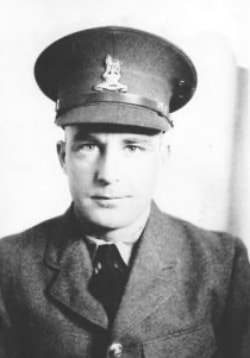
M/61937 Corporal
Charles Leonard Pewtress
Westminster Regiment (Motors), R.C.I.C.
17th April 1945, aged 32.
Plot XIV. G. 1.
Son of Charles Percy and Mary Alice Pewtress, of Hardisty, Alberta.
His headstone bears the inscription "He Fought A Good Fight"
Charles Leonard Pewtress
Westminster Regiment (Motors), R.C.I.C.
17th April 1945, aged 32.
Plot XIV. G. 1.
Son of Charles Percy and Mary Alice Pewtress, of Hardisty, Alberta.
His headstone bears the inscription "He Fought A Good Fight"
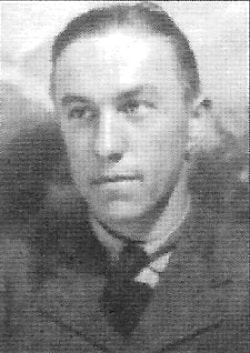
B/116761 Private
John Wakula
Westminster Regiment (Motors), R.C.I.C.
17th April 1945, aged 19.
Plot XIV. G. 3.
Son of Fred and Polly Wakula, of Sifton, Manitoba.
His headstone bears the inscription "Of Sifton, Manitoba, Canada"
John Wakula
Westminster Regiment (Motors), R.C.I.C.
17th April 1945, aged 19.
Plot XIV. G. 3.
Son of Fred and Polly Wakula, of Sifton, Manitoba.
His headstone bears the inscription "Of Sifton, Manitoba, Canada"

G/135 Trooper
John Burpe Wallace
5th Armoured Regiment, 8th Princess Louise's (New Brunswick) Hussars, R.C.A.C.
17th April 1945.
Plot XIV. G. 5.
John Burpe Wallace
5th Armoured Regiment, 8th Princess Louise's (New Brunswick) Hussars, R.C.A.C.
17th April 1945.
Plot XIV. G. 5.
Also on the Memorial
M/106991 Private Frederick Lenard Waters, Westminster Regiment (Motors), R.C.I.C., died 17th April 1945, aged 30. Plot XV1. G. 2. Son of Francis and Ruth Matilda Waters, of Victoria, British Columbia. His headstone bears the inscription In Loving Memory Of Our Dear Son And Brother. Until The Shadows Flee Away"
M/106991 Private Frederick Lenard Waters, Westminster Regiment (Motors), R.C.I.C., died 17th April 1945, aged 30. Plot XV1. G. 2. Son of Francis and Ruth Matilda Waters, of Victoria, British Columbia. His headstone bears the inscription In Loving Memory Of Our Dear Son And Brother. Until The Shadows Flee Away"

